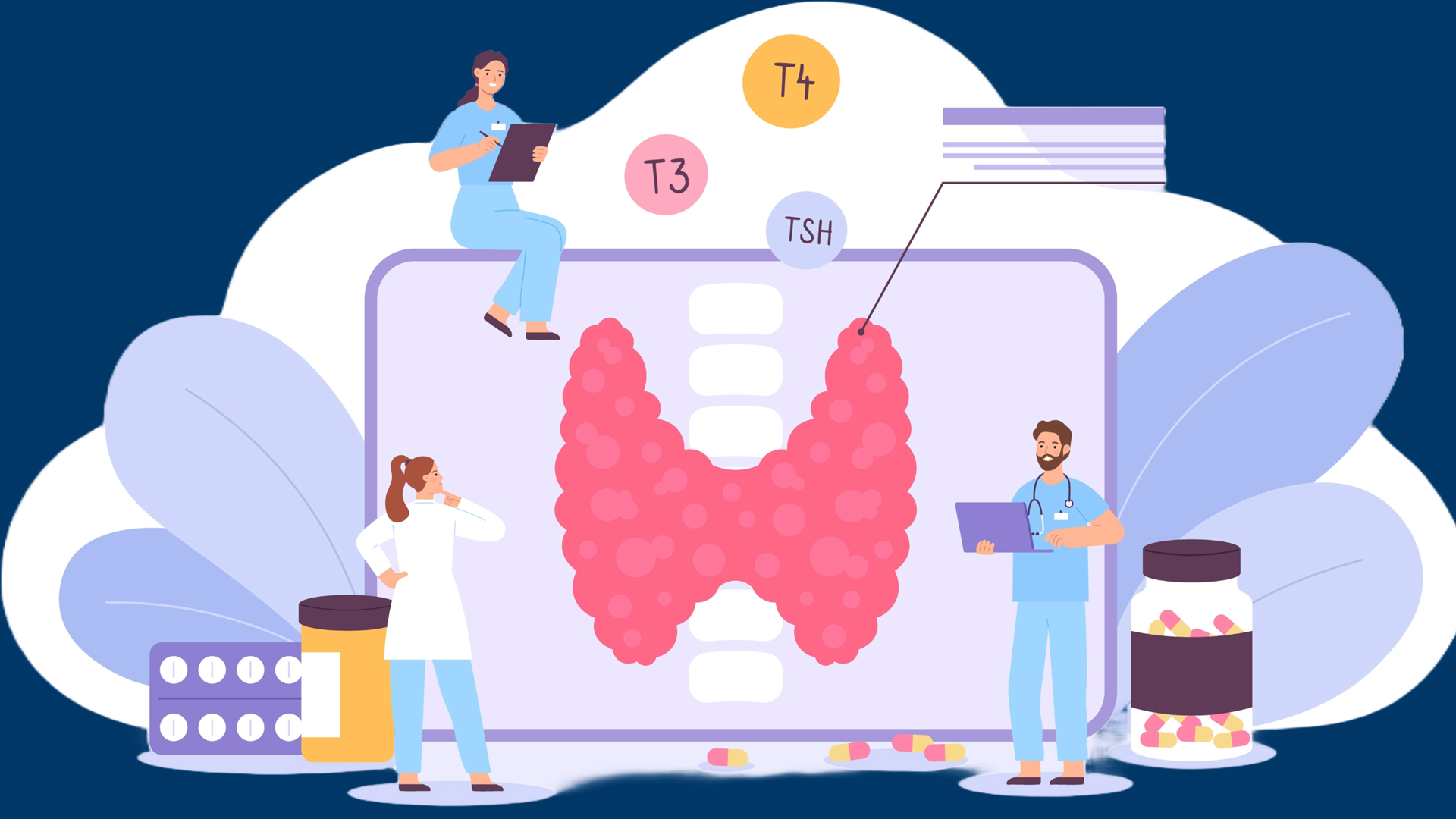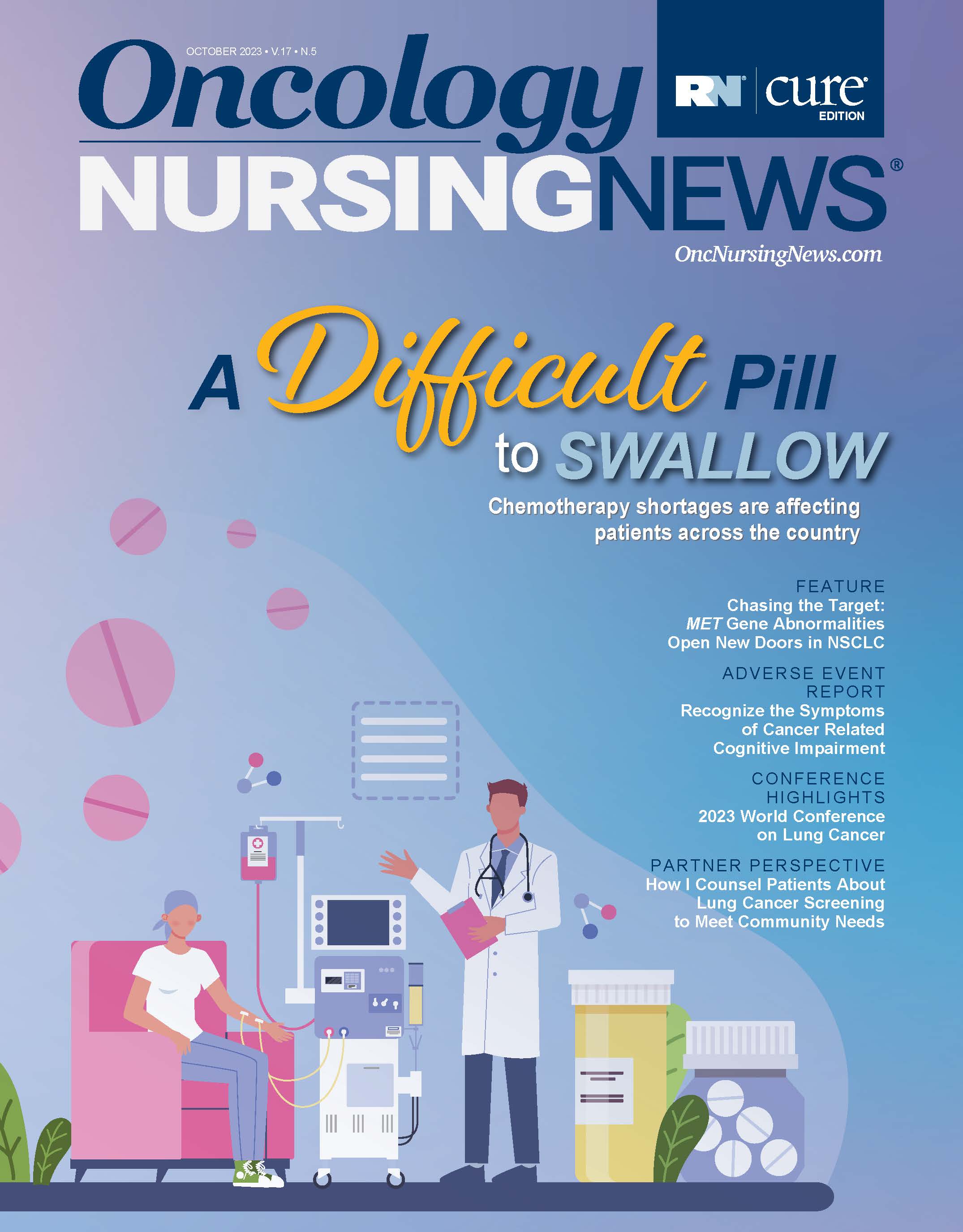The Uncommon Cancer: Thyroid Carcinoma
Thyroid carcinoma is recognized as one of the most uncommon forms of cancer.
The Uncommon Cancer: Thyroid Carcinoma

The thyroid is an endocrine gland that is anatomically located in the neck and responsible for the production of thyroid hormones and iodine.1 It produces 2 thyroid hormones—including an inactive hormone known as thyroxine (T4) and an active hormone, known as triiodothyronine (T3). This powerful organ is also responsible for regulating heart function, basal metabolic rate, respiratory rate, the nervous system, and reproductive health. Underproduction of the thyroid can result in the inability to tolerate cold temperatures, weight gain, depression, fatigue, and constipation.1 In comparison, hyperthyroidism leads to weight loss, palpitations, diarrhea, anxiety, dry and brittle hair, and inability to tolerate temperature extremes.
Thyroid carcinoma is recognized as one of the most uncommon forms of cancer. It has a lifetime risk of 1.2%. The outcome is closely related to its molecular origin.2 The highest incidence of this form of cancer is for those aged 16 to 33 years, and there is a median age of 51 at diagnosis. Seventy-five percent of cases are seen in Hispanic and Asian American women.3 There is also a higher incidence in White North American individuals compared with African American individuals.2 There is an increased rate of the disease in women, with 20% of cancers that develop during pregnancy associated with thyroid cancer. Risk factors for the development of thyroid cancer include familial history in first-degree relatives, obesity, and exposure to radiation. Despite advances, there has been a substantial increase in cases over the past 4 decades.3 Approximately 43,720 cases are projected to develop in the United States in 2023.
Historically, thyroid carcinoma was classified based on histology but has more recently been diagnosed by molecular profiles.3 Papillary thyroid carcinoma accounts for 80% of well-differentiated cancer that presents with mutations in BRAF, RAS, or RET/PTC rearrangements. These abnormalities lead to deviations in normal proliferations. Follicular carcinomas (also known as differentiated carcinomas) account for 10% to 30% of carcinomas, which are driven by RAS nucleotide alterations and PAX8/PPARγ rearrangements. Finally, anaplastic thyroid carcinomas account for less than 1.7% of cancers. It has a rapid onset and mutations in BRAF, TP53, and RAS.
The 3 most common forms of thyroid carcinoma include differentiated thyroid cancers, medullary thyroid cancers, and anaplastic thyroid cancers. Differentiated follicular carcinomas present as a nodule and may not show symptoms for an extended period. For this reason, differentiated carcinomas may be unrecognized and discovered on routine physical examination. However, they have a favorable prognosis. In 90% of patients, radical gland resection with removal of local lymph nodes will successfully manage the disease.4 Medullary carcinomas arise from sporadic or familial deficiencies. Calcitonin and carcinoembryonic antigens are 2 genetic tumor markers isolated to manage this form of cancer. Finally, anaplastic thyroid carcinomas are poorly differentiated and are associated with a high rate of mortality up to 6 months following diagnosis.4 Standard radiotherapy and chemotherapy are not beneficial here and surgery is rarely successful in this setting. It usually leads to delays in treatment and airway management by tracheostomy.
Treating patients with thyroid carcinoma requires a multidisciplinary approach including surgeons, endocrinologists, oncologists, and nuclear medicine radiologists.5 Surgical intervention remains the primary initial management of tumors that are low risk and resectable. Low-risk tumors less than 4 cm in size without invasion of surrounding tissue or adenopathy are managed with either thyroid lobectomy or total thyroidectomy.5 In patients with identified metastasis, a compartment-oriented therapeutic lymph node dissection is recommended. These patients should also have treatment with thyrotropin suppression and radiation therapy.5 These therapies have been known to decrease recurrence and mortality. At this time, they have shown use in low-risk thyroid carcinoma. This treatment enhances uptake of radioactive iodine within the tissue of tumors, which assists in minimizing sodium iodine in follicular cells.5 The suppression of thyroid-stimulating hormone cells is given as an adjunct to surgery to reduce recurrence. Patients with intermediate- and highrisk disease benefit from this form of therapy, although patients with low-risk disease do not.5
Medical management of advanced cancers over recent years has expanded to include tyrosine kinase inhibitors, antiangiogenic drugs, and immunotherapy. These drugs target somatic mutations, which include BRAF, RAS, or RET/PTC translocations that activate the mitogen-activated protein kinase (MAPK) pathways. The MAPK pathway is responsible for cell proliferation, motility, and cell death.5 Findings from multicenter clinical trials have demonstrated statistical and clinical significance, which led to FDA approval. Based on the National Comprehensive Cancer Network category 1 standards, papillary and follicular carcinoma are managed with lenvatinib (Lenvima) and sorafenib (Nexavar), although other treatments may be appropriate based on disease progression and frontline response.2 Asymptomatic medullary carcinoma is managed with vandetanib (Caprelsa) and cabozantinib (Cometriq) as well as selpercatinib (Retevmo) and pralsetinib (Gavreto) in patients with RET mutations. For patients with high tumor mutational burden or microsatellite instability-high/ mismatch repair–deficient tumors that have progressed beyond prior management, pembrolizumab (Keytruda) and best supportive care are recommended. These are used when there are no alternative options.
Best nursing care includes identifying risk factors and adverse events. Printed information and smartphone apps can be given to patients and their families to assist with the critical assessment needed for treatment evaluation. Proactive nurse-led education is critical in managing toxicities and reducing the risk of permanently discontinuing treatment.
References
- Armstrong M, Asuka E, Fingeret A. Physiology, Thyroid Function. StatPearls Publishing; 2023. Accessed September 20, 2023. https://www.ncbi.nlm.nih.gov/books/NBK537039/
- NCCN. Clinical Practice Guidelines in Oncology. Thyroid carcinoma, version 4.2023. Accessed September 11, 2023. https://www.nccn.org/professionals/physician_gls/pdf/thyroid.pdf
- Haymart MR. Progress and challenges in thyroid cancer management. Endocr Pract. 2021;27(12):1260-1263. doi:10.1016/j.eprac.2021.09.006
- De Leo A, Di Simone E, Spano A, Puliani G, Petrone F. Nursing management and adverse events in thyroid cancer treatments with tyrosine kinase inhibitors: a narrative review. Cancers (Basel). 2021;13(23):5961. doi:10.3390/cancers13235961
- Laha D, Nilubol N, Boufraqech M. New therapies for advanced thyroid cancer. Front Endocrinol (Lausanne). 2020;11:82. doi:10.3389/fendo.2020.00082




